I stopped in my tracks suddenly and closed my eyes. This was an involuntary reaction to encountering something unexpected. I slowly opened my eyes as I cleared from my face, the spider web that I had walked into.
I must have walked into a spider web any number of times while being distracted by various other things that one sees while walking in the forests. But this time was different – the web was particularly sticky.
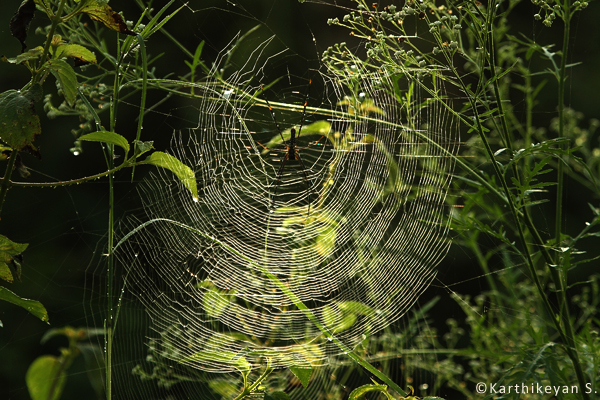
Large orb webs built by Giant Wood Spiders or Golden Orb Weavers.
Having cleared the web, I stepped back to see whose web it was that I had destroyed inadvertently. It was the all familiar Giant Wood Spider, also one of the larger spiders in India. This close encounter however got me to realize that their web is yellow in colour and not white like one normally sees. This gives them the other name Golden Orb Weavers! However, let’s stick to the generic name Giant Wood Spider for now.
The name Giant Wood Spider is used to refer mainly to Nephila pilipes which is very often seen, owing to its size and needless to say the size of its web. This is a common spider in the jungles of peninsular India where webs built across large open spaces and at times spanning upto 2 meters are not uncommon.
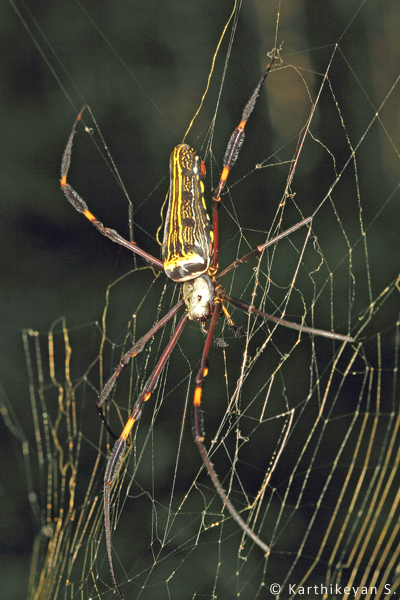
The Giant Wood Spider Nephila pilipes also known as the Giant Golden Orb Weaver – notice the colour of the web.
Mounting a protracted watch over one of the webs of the Giant Wood Spider Nephila pilipes can be very interesting. You can observe various behaviours of these spiders – some of which could even take you by surprise – particularly the housekeeping. A leaf that lands on the web is often promptly removed and discarded! This apart, you could be lucky to observe how the prey is wrapped and consumed, how the web is maintained, moulting, and mating with the tiny male.
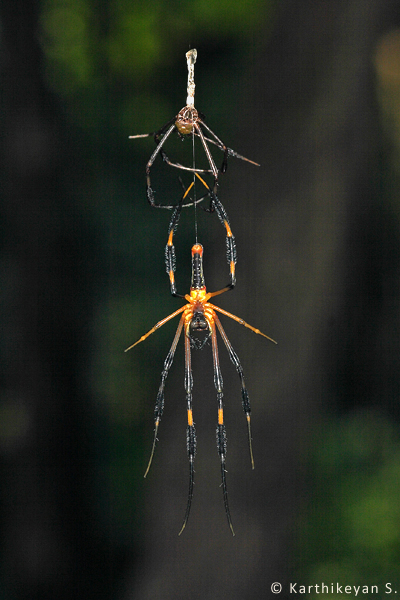
A Nephila pilipes that has just completed moulting.
You will get to observe all this for a few months each year. One typically sees large webs from September till about December / January. It is around this time that the females who have been mated will descend to the ground, lay eggs and die.
The Black Wood Spider Nephila kuhlii is also seen in habitats similar to that of the Giant Wood Spider. Many a times the two can be seen alongside each other. Both these species also have a very similar life cycle. There are times when I have seen in one small space perhaps over a 100 of these spiders (Giant Wood Spider and Black Wood Spider) – each sitting on its own web! It is easy to tell these two giants apart without any ambiguity.
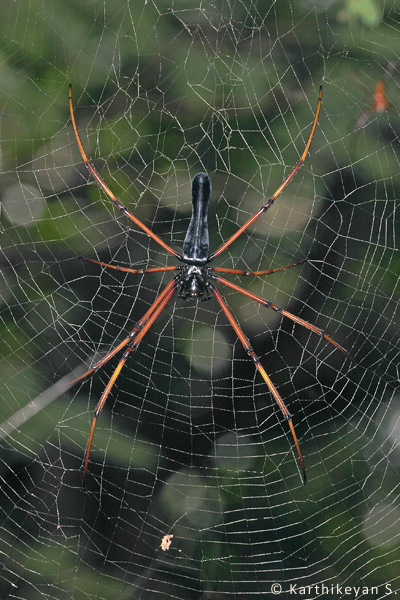
The Black Wood Spider Nephila kuhlii that is sometimes seen in the company of N. pilipes.
Though they are common in forested areas, they are not uncommon in Bangalore where they can be seen in gardens or plots that are allowed to grow wild. The individual that made my garden its home for a while is a case in point.
Though there are six species of Giant Wood Spiders known from India, three of them are particularly common. The two described above are encountered in peninsular India and a third, Nephila clavata, is common in the hills of north India. It enjoys a very wide distribution even outside of India. I have seen it all the way from Uttarakhand to Sikkim.
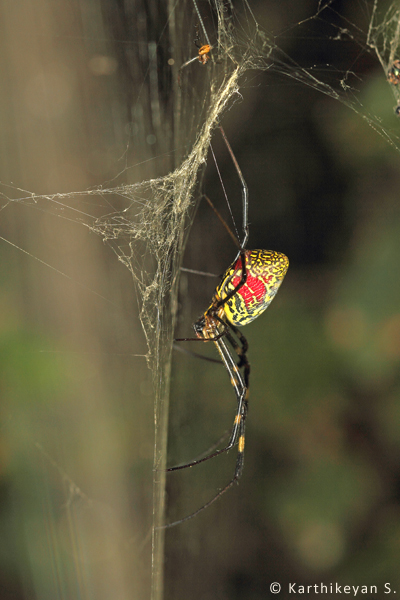
Nephila clavata – seen singly or at times in congregations of over a dozen individuals each sitting on its own web!
Often the webs of all these golden orb weavers are inhabited by kleptoparasites. As a group, they also exhibit extreme male dwarfism and female gigantism.
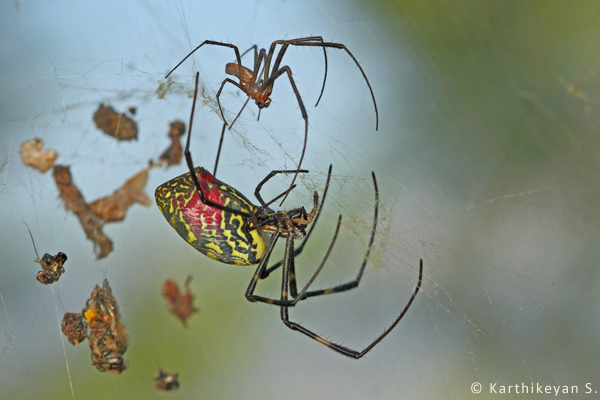
The male and female Nephila clavata.
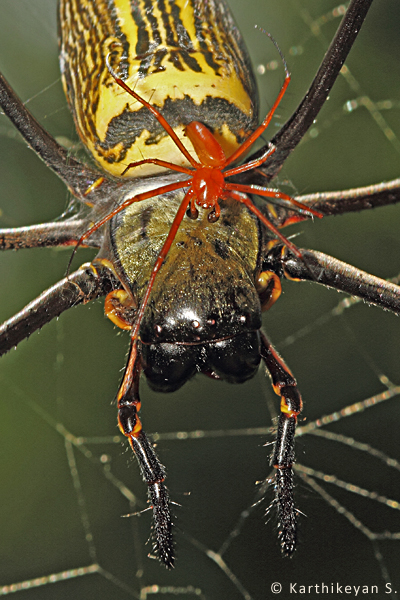
A male of Nephila pilipes sitting on the cephalothorax of the female.
Do not let go of an opportunity to watch the Giant Wood Spiders. Maybe this little beginning and a brief peep into their lives will set the stage for a longer innings with these fascinating arachnids.